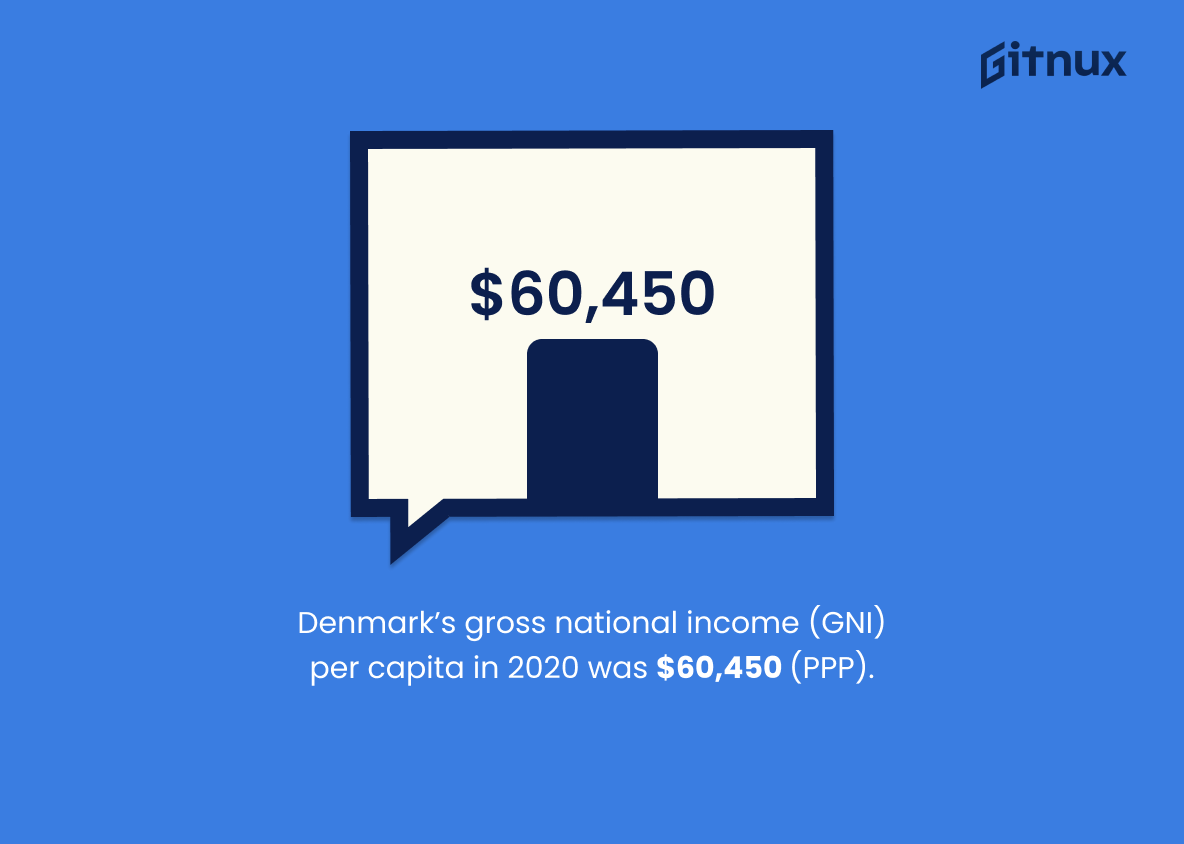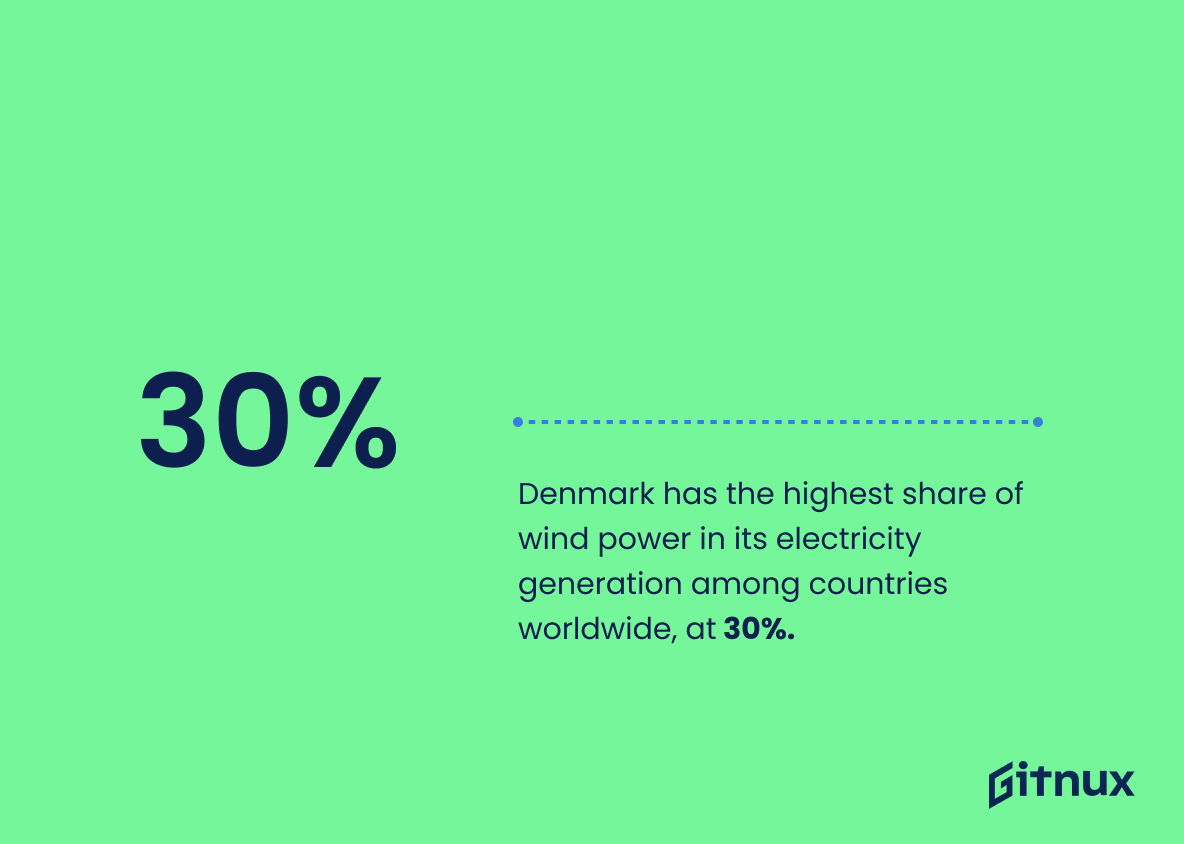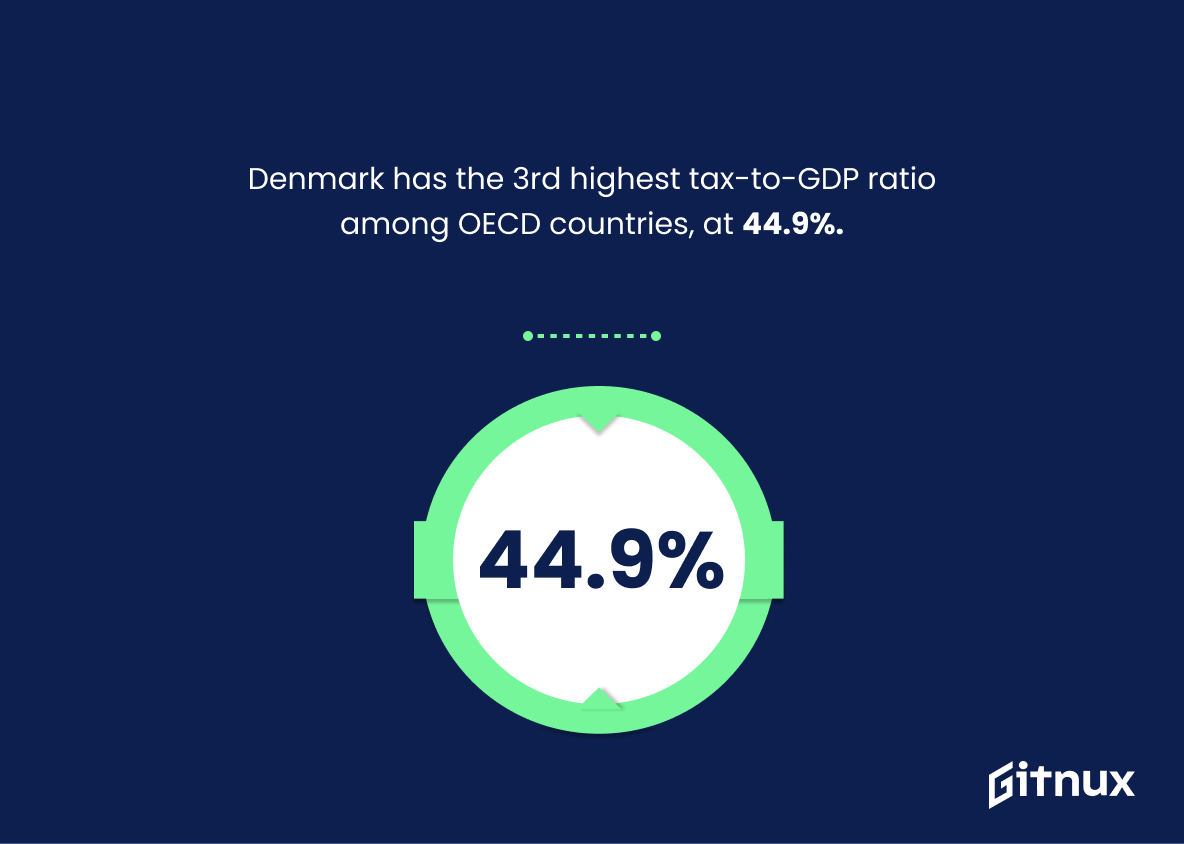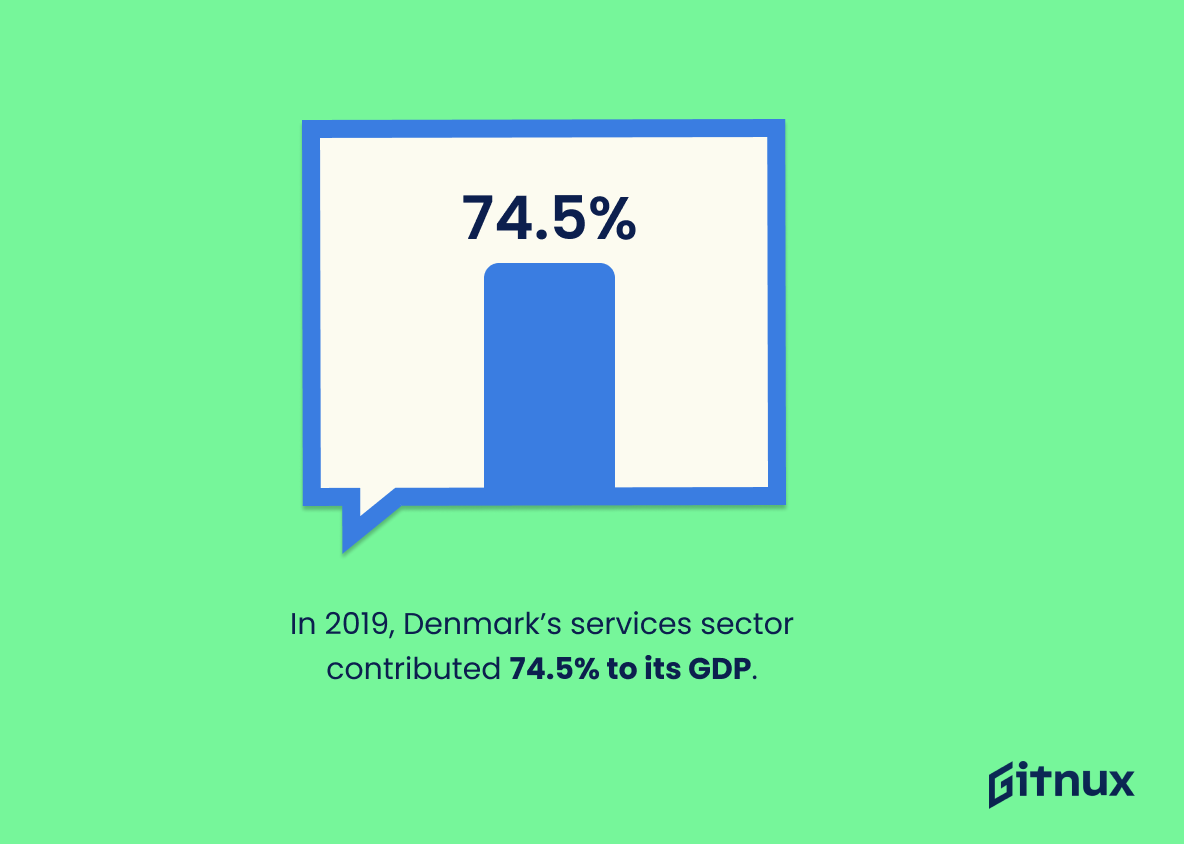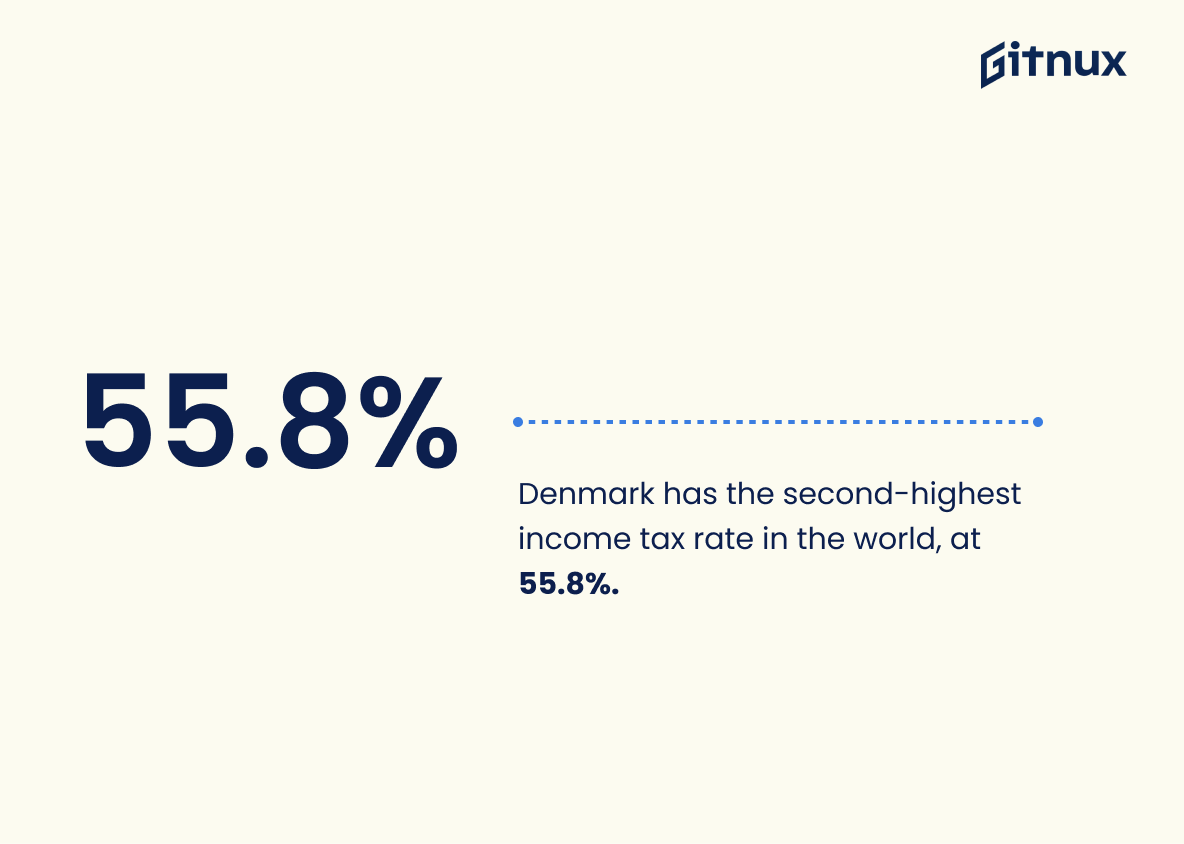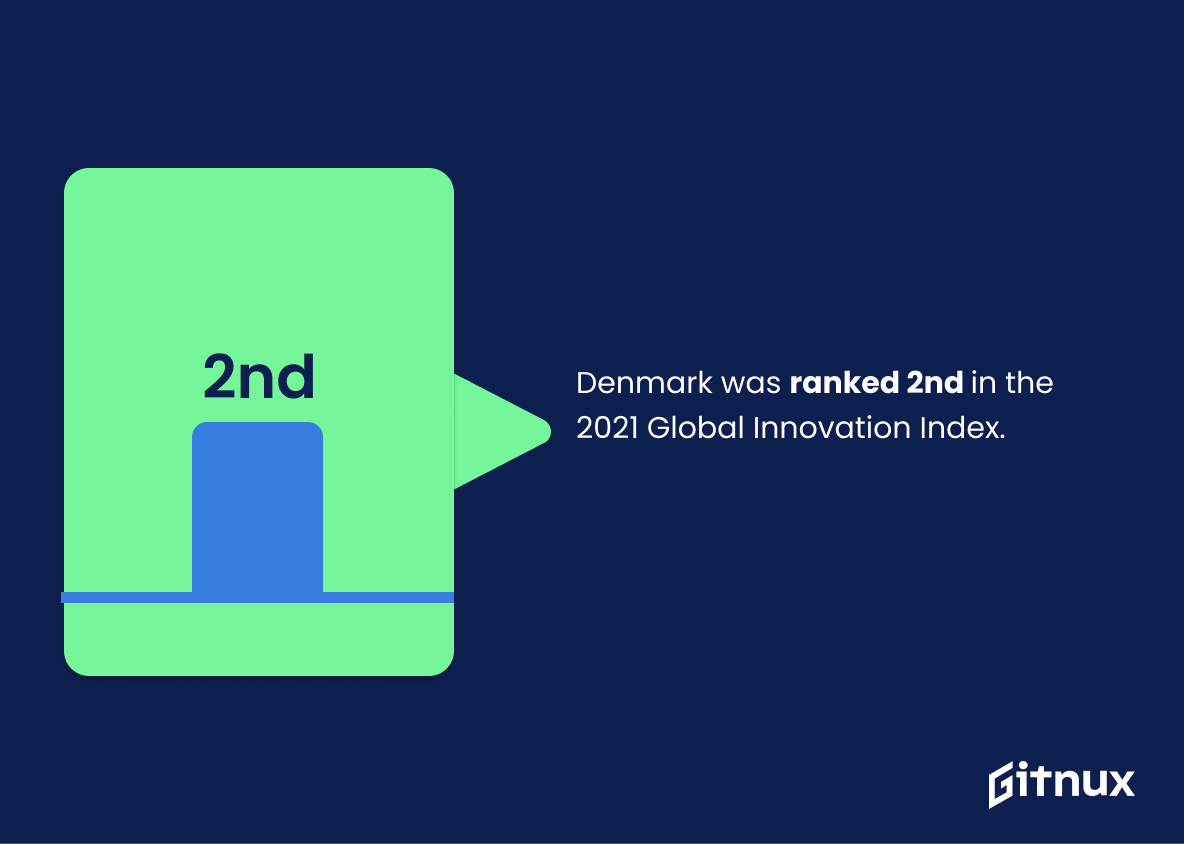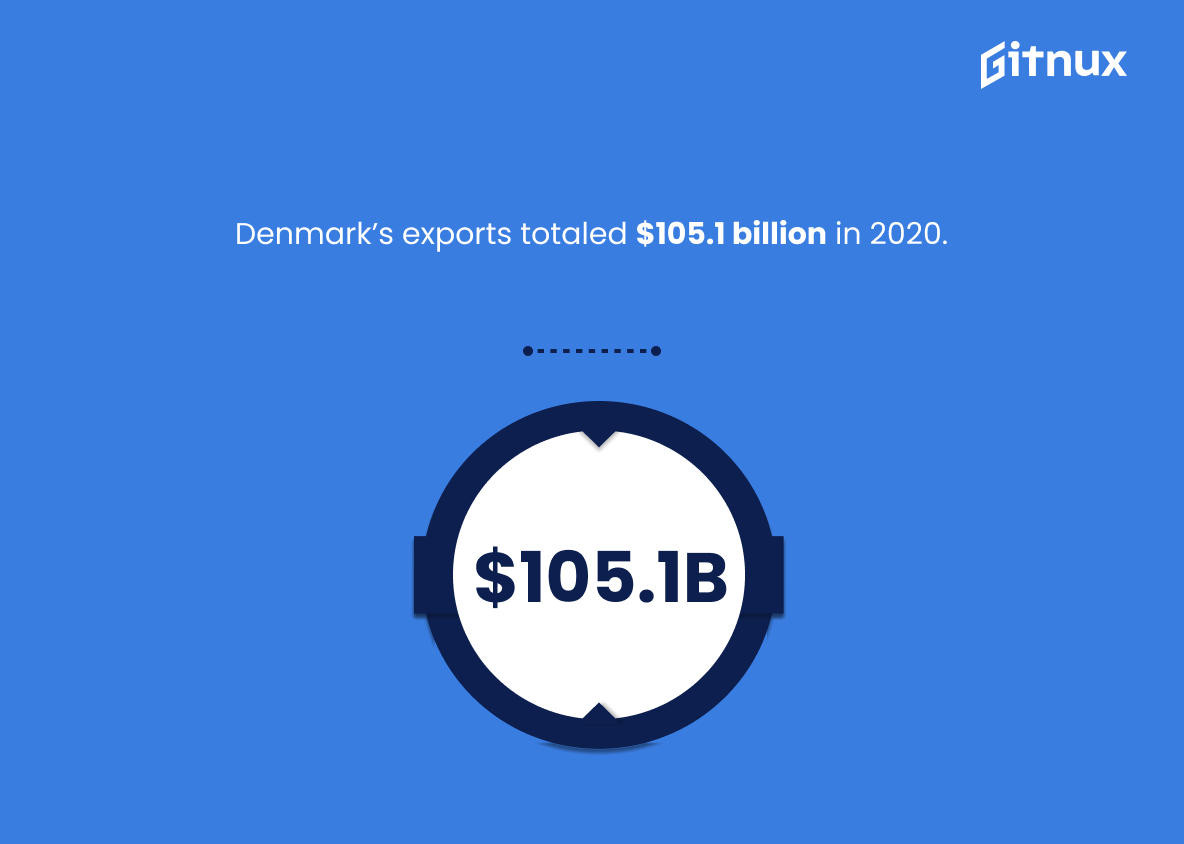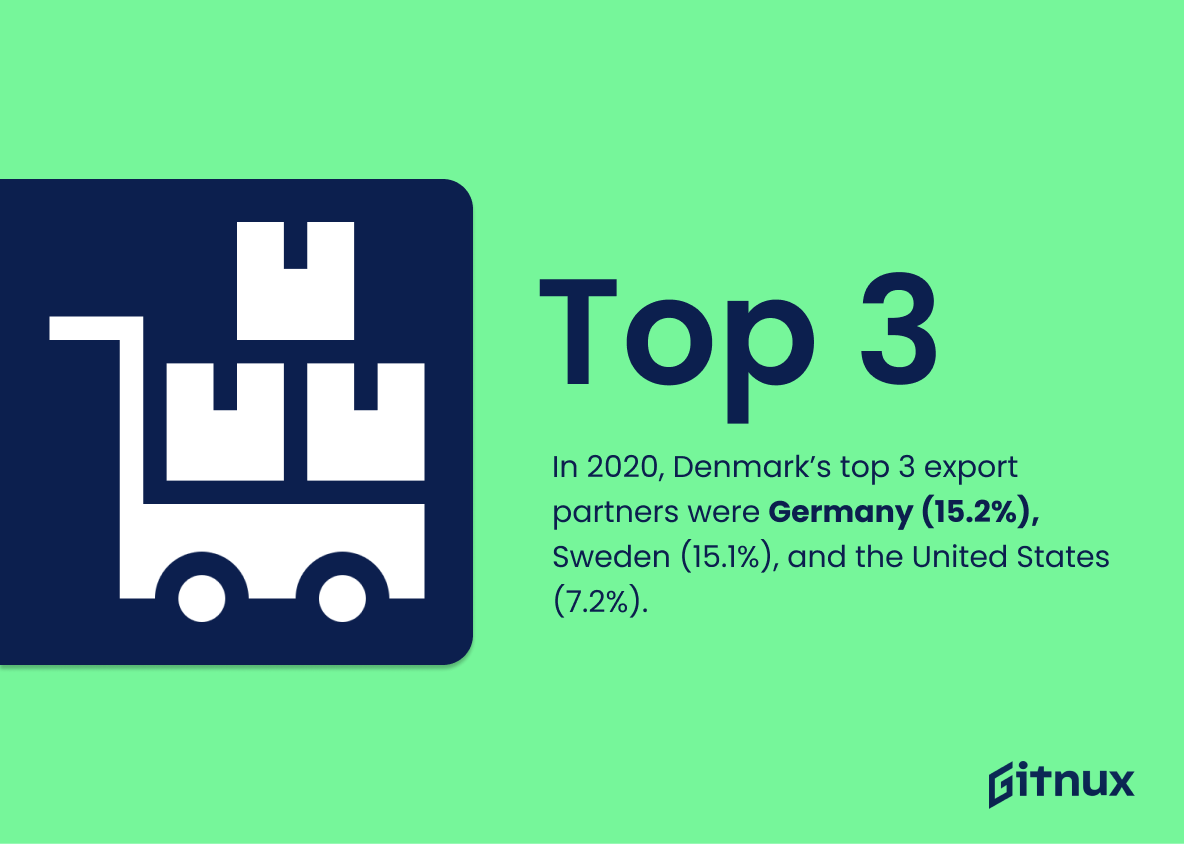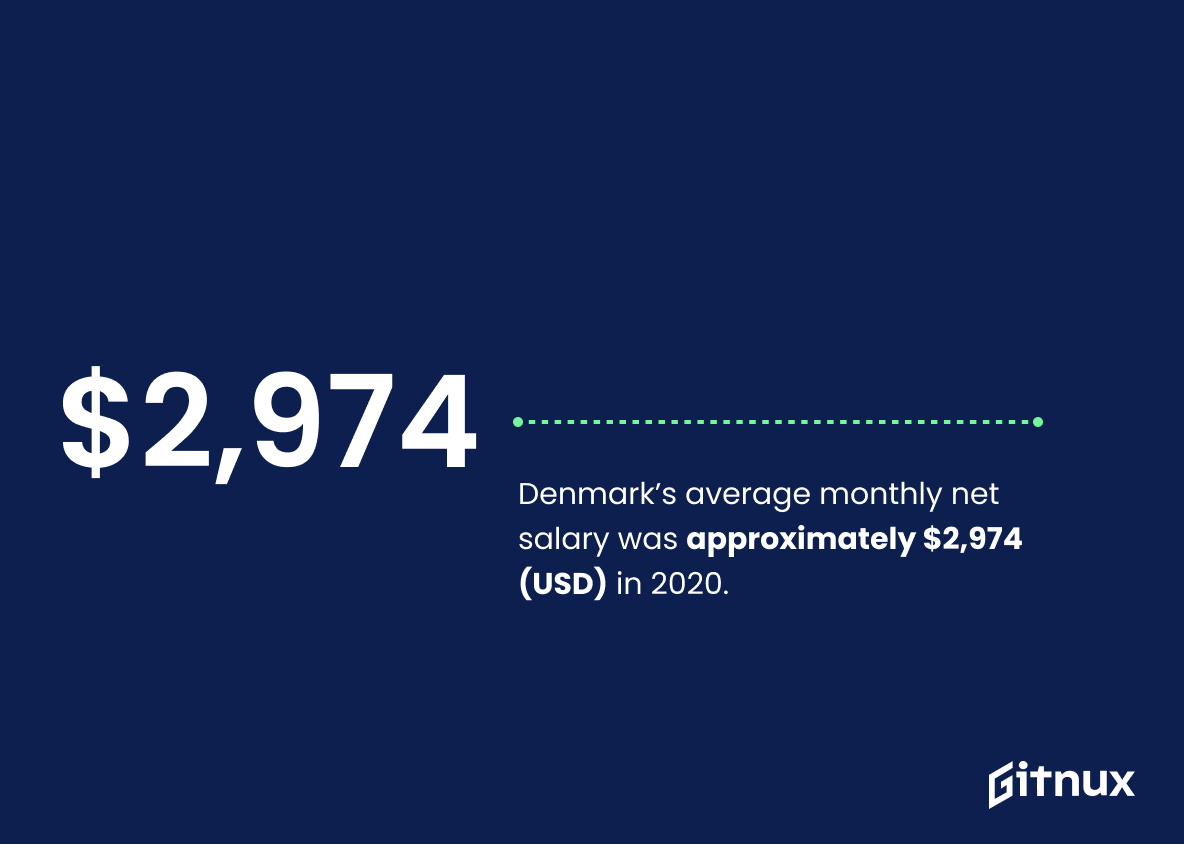Welcome to a comprehensive overview of Denmark’s economy. This blog post will provide an in-depth look at the country’s economic statistics, including its social mobility ranking, GDP and GNI per capita figures, unemployment rate, ease of doing business index score, wind power generation share percentage, inflation rate and foreign direct investment (FDI) inflows. We’ll also explore Denmark’s tax-to-GDP ratio as well as its Human Development Index (HDI), services sector contribution to GDP figure and public debt to GDP ratio. Additionally we’ll examine the nation’s income tax rate along with its Global Innovation Index rank; exports total value; top 3 export partners; households’ gross debt to income ratio; primary industries contributing to GDP percentages; average monthly net salary amount for 2020 year end data point. Finally we will review their World Healthcare Innovation Ranking for 2022.
The fact that Denmark has the world’s highest social mobility is a testament to the strength of its economy. It speaks to the country’s commitment to providing equal opportunities for all its citizens, regardless of their background or socio-economic status. This is a key factor in creating a thriving economy, as it allows for a more diverse and productive workforce. Furthermore, it ensures that everyone has the chance to reach their full potential, which in turn leads to greater economic growth and prosperity.
In 2020, Denmark’s GDP was approximately $348.08 billion (PPP).
This statistic is a telling indicator of Denmark’s economic success. It demonstrates the country’s impressive economic growth and stability, which is a testament to the strength of its economy. It also provides a benchmark for comparison with other countries, allowing for a better understanding of Denmark’s economic standing in the world. Furthermore, it serves as a useful reference point for those interested in learning more about the country’s economic performance.
Denmark Economy Statistics Overview
Denmark’s economy ranks 8th in the world in ease of doing business.
This statistic is a testament to the strength of Denmark’s economy, highlighting its impressive standing in the global business landscape. It speaks to the country’s commitment to creating an environment that is conducive to business growth and success, making it an attractive destination for entrepreneurs and investors alike. This statistic is a key indicator of Denmark’s economic health and stability, and is an important factor to consider when evaluating the country’s overall economic performance.
Denmark’s gross national income (GNI) per capita in 2020 was $60,450 (PPP).
The statistic of Denmark’s GNI per capita in 2020 is a telling indicator of the country’s economic success. It demonstrates the strength of the Danish economy and its ability to provide a high standard of living for its citizens. This statistic is a testament to the country’s commitment to economic growth and stability, and serves as a benchmark for other countries to strive for.
Denmark has the highest share of wind power in its electricity generation among countries worldwide, at 30%.
This statistic is a testament to Denmark’s commitment to renewable energy and sustainability, demonstrating their dedication to protecting the environment and reducing their carbon footprint. It is a powerful indicator of the country’s economic progress and a sign of their commitment to a greener future. This statistic is a powerful reminder of the importance of investing in renewable energy sources and the potential for economic growth that comes with it.
Denmark received a total of $2.2 billion in foreign direct investment (FDI) in 2020.
The statistic of Denmark receiving $2.2 billion in foreign direct investment in 2020 is a testament to the strength of the Danish economy. It shows that investors from around the world have faith in the country’s economic stability and are willing to put their money into the country. This is a positive sign for the Danish economy and indicates that the country is on the right track to continued growth and prosperity.
Denmark has the 3rd highest tax-to-GDP ratio among OECD countries, at 44.9%.
This statistic is a telling indication of the economic strength of Denmark. It demonstrates that the country is able to generate a significant amount of revenue from taxation, which can be used to fund public services and infrastructure. This is a key factor in the country’s economic success, as it allows the government to invest in the welfare of its citizens and the development of the economy.
Denmark was ranked 4th worldwide in the 2020 Human Development Index (HDI).
The fact that Denmark was ranked 4th worldwide in the 2020 Human Development Index (HDI) is a testament to the country’s commitment to providing its citizens with a high quality of life. This is evidenced by the country’s impressive economic performance, which is reflected in its strong GDP growth, low unemployment rate, and high levels of social welfare spending. This ranking is a reflection of the country’s dedication to creating a prosperous and equitable society, and serves as a reminder of the importance of investing in the well-being of its citizens.
In 2019, Denmark’s services sector contributed 74.5% to its GDP.
This statistic is a telling indicator of the strength of Denmark’s services sector and its importance to the country’s economy. It highlights the fact that the services sector is a major contributor to Denmark’s GDP, and is thus a key factor in the country’s economic success. This statistic is essential to understanding the overall health of Denmark’s economy and provides valuable insight into the country’s economic performance.
Denmark has the second-highest income tax rate in the world, at 55.8%.
The fact that Denmark has the second-highest income tax rate in the world speaks volumes about the country’s commitment to economic stability and social welfare. This high rate of taxation is indicative of the government’s dedication to providing its citizens with a high quality of life, as well as its willingness to invest in public services and infrastructure. As such, this statistic is an important part of understanding the overall economic landscape of Denmark and its impact on the lives of its citizens.
Denmark was ranked 2nd in the 2021 Global Innovation Index.
The fact that Denmark was ranked 2nd in the 2021 Global Innovation Index is a testament to the country’s commitment to fostering a culture of innovation and creativity. This is a key factor in driving economic growth and development, as it encourages businesses to develop new products and services that can be sold in the global market. This, in turn, leads to increased job opportunities, higher wages, and a stronger economy overall. As such, this statistic is a clear indication of Denmark’s success in creating a thriving economy.
Denmark’s exports totaled $105.1 billion in 2020.
This statistic is a testament to Denmark’s economic strength, showcasing the country’s ability to produce and export goods and services on a large scale. It is indicative of the country’s economic growth and stability, and provides insight into the country’s economic performance in 2020. This statistic is an important part of understanding the overall picture of Denmark’s economy and its place in the global economy.
In 2020, Denmark’s top 3 export partners were Germany (15.2%), Sweden (15.1%), and the United States (7.2%).
This statistic is a telling indicator of Denmark’s economic ties with the rest of the world. It reveals that Germany and Sweden are the two largest trading partners of Denmark, accounting for a combined 30.3% of the country’s exports. This suggests that Denmark has strong economic ties with its two closest neighbors, and that the United States is a distant third in terms of trade. This information is important for understanding the dynamics of Denmark’s economy and its relationship with the rest of the world.
The primary industries contributing to Denmark’s GDP in 2019 were services (73.6%), industry (24.1%), and agriculture (2.3%).
This statistic is a telling indication of the economic landscape in Denmark. It reveals that services are the main driver of the country’s GDP, accounting for nearly three-quarters of the total. This highlights the importance of the service sector in Denmark’s economy, and the need for the country to continue to invest in and develop this sector in order to remain competitive. Additionally, the relatively low contribution of agriculture and industry to the GDP suggests that Denmark is not heavily reliant on these sectors for economic growth.
Denmark’s average monthly net salary was approximately $2,974 (USD) in 2020.
This statistic is a key indicator of the economic health of Denmark. It provides insight into the average income of citizens, which can be used to measure the overall standard of living in the country. Additionally, it can be used to compare the salaries of different professions and industries, helping to identify potential areas of growth and development. Finally, it can be used to compare the salaries of Danish citizens to those of other countries, providing a valuable insight into the relative economic strength of Denmark.
Conclusion
Denmark is a country with an impressive economy, boasting high social mobility and strong economic indicators. It has the world’s highest social mobility, a GDP of $348.08 billion (PPP) in 2020, an unemployment rate of 4.7%, ranks 8th in ease of doing business worldwide, and had a GNI per capita of $60,450 (PPP). Denmark also leads the way when it comes to renewable energy sources such as wind power; 30% of its electricity generation came from wind power in 2021. Inflation was 3.3% that same year while foreign direct investment totaled $2.2 billion for 2020 alone. The tax-to-GDP ratio stands at 44.9%, making it one of the highest among OECD countries; however this does not seem to have deterred businesses or citizens since Denmark ranked 4th on the Human Development Index for 2020 and 2nd on Global Innovation Index for 2021 respectively – both rankings being testament to how well their economy is performing overall despite having some challenges along the way such as public debt which stood at 43%. Services contribute 73% towards GDP while industry contributes 24%; agriculture only makes up 2%. Average monthly net salary was approximately USD$2974 last year whilst households’ gross debt to income ratio remains amongst OECD’s highest at 290%. All these factors combined make Denmark’s economy one worth noting due to its stability amidst global uncertainty caused by pandemics or other external forces beyond our control
References
0. – https://www.wits.worldbank.org
1. – https://www.www.wipo.int
2. – https://www.www.statista.com
3. – https://www.www.cia.gov
4. – https://www.data.oecd.org
5. – https://www.www.kff.org
6. – https://www.oec.world
7. – https://www.hdr.undp.org
8. – https://www.www.unctad.org
9. – https://www.www.numbeo.com
10. – https://www.www.weforum.org
11. – https://www.data.worldbank.org
12. – https://www.www.doingbusiness.org

